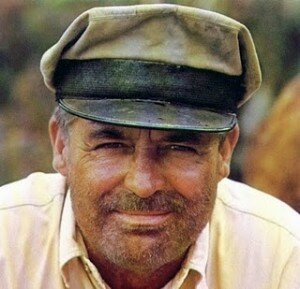There is a strange irony in a movie like Man Hunt and its director Fritz Lang making the film meet the propaganda demands of the period. Those demands explain (I’m speculating) the sudden and out-of-the-blue ending to Man Hunt.
If ever there was a director who knew something about what Hitler and the Nazis meant, it was Fritz Lang, who left Germany and his career there because of them. As it is, he made Man Hunt and within it we see a very cold and brutal portrayal of what the Nazis were and represented.
Man Hunt (1941)
Directed by Fritz Lang
I like going into a movie knowing nothing about it, or next to nothing. That’s how I went into Fritz Lang’s Man Hunt. I knew about Fritz Lang though not a great deal. Let’s say I was aware of him and how he’s spoken of as a director.
Man Hunt fairly quickly lets you know what it is about, though in a deceptive way. It begins with a big game hunter lying in the grass, up in an elevated and hidden position, setting his rifle’s sights for a shot. Curiously, the scene intercuts with a German army officer, a Nazi, walking in what seems the same area.
Then we see what the hunter is aiming at: Hitler. We see he has the shot but, surprisingly, he doesn’t take it. He’s satisfied with knowing he could take it, and relaxes. Then he pauses, seems to reconsider, and puts a cartridge in the gun and re-aims.
He appears to have decided to take the shot and kill Hitler. He seems about to when the German soldier the scene had been intercutting with sets upon him. He’s stopped and taken prisoner.
We next see him, apparently having been beaten, taken to Major Quive-Smith, played by George Sanders. Now, we get the last few elements the story needs to really get going. We already know the time period, around the Second World War. It gets more specific now: it’s 1939, just before the war begins and world politics are sensitive to say the least.
What Major Quive-Smith wants from the game hunter, the well-known Captain Alan Thorndike played by Walter Pigeon, is a signed confession that he was trying to assassinate Hitler and was working for the British government.
To cut to the chase (no pun intended), Thorndike is tortured, yet continues to refuse. Finally, the Major takes him out and has him thrown from a cliff, murdered by the Nazis. He doesn’t die, however, and manages an escape and the chase is on. The big game hunter becomes the hunted and it is the Nazis, headed by Major Quive-Smith, and a darkly quiet and sinister looking John Carradine (“Mr. Jones”), who are hunting him.
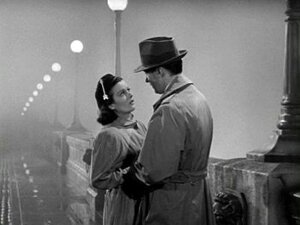 The movie is about this hunt and, once Thorndike meets the young cockney woman Jerry, played by Joan Bennett, about a relationship that is somewhere between platonic and romantic. (Bennett plays Jerry with an accent that may be a tad overdone.)
The movie is about this hunt and, once Thorndike meets the young cockney woman Jerry, played by Joan Bennett, about a relationship that is somewhere between platonic and romantic. (Bennett plays Jerry with an accent that may be a tad overdone.)
It’s a very good, quick paced movie that pulls you in immediately with its tantalizing opening. As far as suspense goes, Lang knows his business. Along with the quick pace, there are some wonderful shots.
I wrote about Ugetsu recently and director Kenji Mizoguchi’s penchant for a moving camera shot, like his scrolling shot. In Man Hunt, Fritz Lang also uses this kind of thing (though not to the degree Mizoguchi does). The film opens with a moving camera shot that softly dissolves into another moving shot that, in turn, also dissolves into a moving shot. The effect is of one long moving shot that comes to a rest on Alan Thorndike aiming his rifle at his target, Adolf Hitler.
Throughout the movie you see Lang framing shots in wonderful ways and many of these also involve movement though not of the camera but of the characters.
There is one where a German officer is sitting at a desk and above him there is a large emblem. Initially, you think there is something wrong with the framing because it seems unbalanced – the space between the officer and emblem is too great. Then the officer stands and fills the frame and the shot makes sense.
Lang also creates great scenes combining his talent for framing shots with great sets that involve lines, labyrinths and curious designs. Visually, Man Hunt is fun to watch.
In fact, the only sour note would be the ending. On one hand, there is a very darkly Fritz Lang element to the story’s end for one major character, and there is a wonderful scene between Major Quive-Smith and Thorndike.
On the other, there is the abrupt ending with its patriotic trumpeting. It is understandable – the movie is a wartime propaganda product – but jarring.
So about ninety-seven percent of Man Hunt is a tremendous, suspenseful movie from Fritz Lang. It is well worth seeing.
On Amazon:
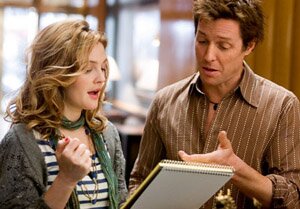 The movie Music and Lyrics is a very light romantic comedy. That is all it aspires to be. Yet some of the reviews I’ve seen of it seem to dislike it for this very reason. I’m not sure why. What might their expectations be? Every romantic comedy will be The Philadelphia Story?
The movie Music and Lyrics is a very light romantic comedy. That is all it aspires to be. Yet some of the reviews I’ve seen of it seem to dislike it for this very reason. I’m not sure why. What might their expectations be? Every romantic comedy will be The Philadelphia Story?
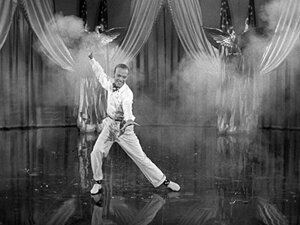
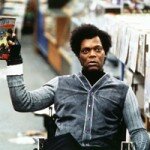
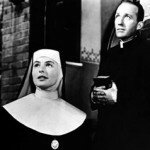
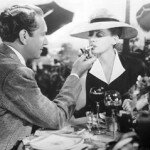
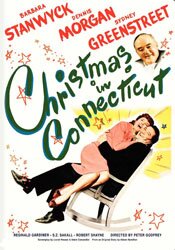
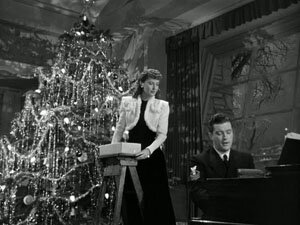 Except she’s a city apartment dweller and doesn’t know the first thing about cooking. The complication comes when her publisher, Sydney Greenstreet as Alexander Yardley, decides to invite himself and the war hero to Christmas at her home.
Except she’s a city apartment dweller and doesn’t know the first thing about cooking. The complication comes when her publisher, Sydney Greenstreet as Alexander Yardley, decides to invite himself and the war hero to Christmas at her home.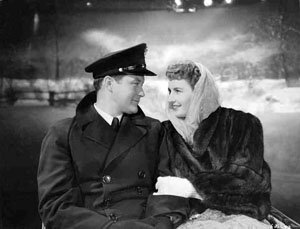 I also found some of the characterizations in the movie a bit peculiar, though not necessarily in a bad way. They just seemed odd. As mentioned, there is a food obsessed war hero who seems to forget his obsession once the real movie starts. Then there is Stanwyck’s Elizabeth Lee who appears to be completely self-centred and indulgent – yet we like her.
I also found some of the characterizations in the movie a bit peculiar, though not necessarily in a bad way. They just seemed odd. As mentioned, there is a food obsessed war hero who seems to forget his obsession once the real movie starts. Then there is Stanwyck’s Elizabeth Lee who appears to be completely self-centred and indulgent – yet we like her. Don’t ever accuse the entertainment business of not cleaning up its plate. There is no place like the world of entertainment for squeezing every last drop of blood out of a “property” (as the money guys refer to it).
Don’t ever accuse the entertainment business of not cleaning up its plate. There is no place like the world of entertainment for squeezing every last drop of blood out of a “property” (as the money guys refer to it).